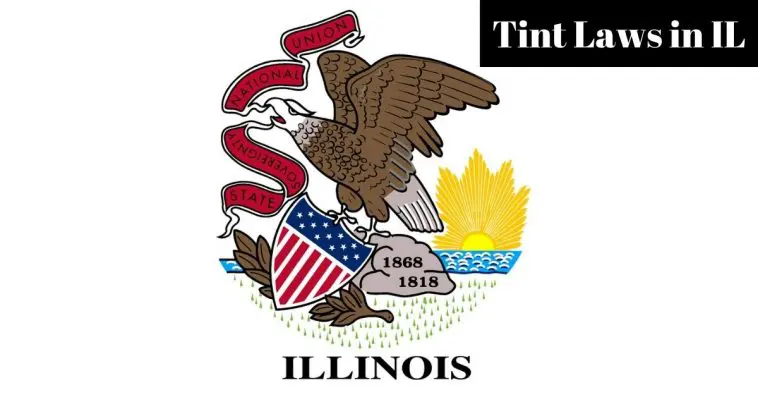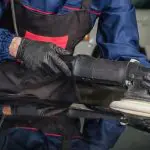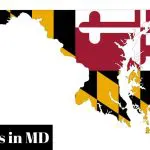Tinted windows provide a handful of benefits, such as security, privacy, preserved car interior, and reduced severe interior heat. It looks pretty cool, too, right?
That’s why the market for vehicle window tinting has consistently been in huge demand and is assumed to expand for at least a 5 percent rate.
Not until Illinois window tint laws passed the court in 2009. What does it mean for vehicle owners, especially for those who love exploring different tinting styles?
The state is recognized for implementing some of the strictest parameters within the US region. Knowing these laws can guarantee legal and safe driving.
Read on this guide to learn how Illinois tint laws apply to all types of vehicles, along with the potential exemptions you can be eligible for.
TABLE OF CONTENTS
Are You Allowed To Have Tinted Windshield And Windows In Illinois?
Installing tinted windshield and windows is entirely acceptable by the country. But there are boundaries. Yes, it is an excellent way to block detrimental heat and light. But on a negative note, it can obstruct your vision, especially during night travels.
The tinted windshield on the front should not go above 6 inches. It applies both to sedans and sports utility vehicles. Sedan owners can tint the rear window for no more than 35 percent.
While for SUVs, there are no limitations set. You can either go as dark or as light as you want. The front, side, and back windows also vary.
What Is The Darkest Tint You Can Legally Get In IL?
Similar to other states, window tint is gauged through visible light transmission (VLT) percentage. It calculates how much light can pass through window glass and film. Simply put, higher VLT% allows more light to enter while lower VLT% allows less light.
As for the case of Illinois, the darkest tint any car owner can get would be 35%. However, you can go lower for your backside and rear window (vans, trucks, buses, and SUVs only).
Is 20% Tint Illegal In IL?
The VLT of 20% tint is not downright illegal in the state of Illinois. Though as we have mentioned, the rear window and back door windows of any MPVs are only authorized to use this. You can stick to the legal 35% or go even darker, up to 5%.
Other than the window tint darkness, there are supplementary regulations you should pay attention to.
You don’t need sticker or certificate requirements neither specified tint color. Vehicles with tinted back windows need dual side mirrors to promote a purer image on the road.
Can You Get Pulled Over For Tinted Windows In Illinois?
If you hit the road and a police officer believes your window has dark tints, you may request for a stopover and check the VLT percentage.
They rely on a tint meter for accurate measurement. If it is not the appropriate amount, they can pull your car over and dispense you a ticket.
How Much Is A Tint Ticket In IL?
Every year, there seems a never-ending report of vehicle owners who are being ticketed. Either they are still new in the area and lack some valuable information about the window tint laws, or just plain hard-bitten.
Regardless, receiving a ticket in Illinois is often a petty offense and might basically cost you a small figure.
Initial penalties can range anywhere between $50 and $500. You have to settle it down as soon as possible to reduce the possibility of paying an extra amount. Repeat offenses will require you to fork out $100 to $500.
Window Tint Darkness In Illinois
Passenger vehicles are those types of cars designed for transporting commuters from one place to another on a daily basis, with examples sedans, hardtops, and coupes.
Multi-purpose vehicles are known as heavyweight pieces of machinery that carry a crowd of passengers and transfer materials (such as vans or pickups).
For Passenger Vehicle
- Windshield – non-reflective on top of six inches of the windshield
- Front Side Windows – should allow more than 35% light
- Back Side windows – should allow more than 35% light
- Rear Window – should allow more than 35% light
For MPV (Multi-Purpose Vehicle)
- Windshield – non-reflective on top of six inches of the windshield
- Front Side Windows – should allow more than 35% light
- Back Side Windows – any tint darkness is permissible
- Rear Window – any tint darkness is permissible
Window Tint Reflection In Illinois
The role of tint reflection is to curtail heat and glare, besides reflecting incoming light. While there is no crystal-clear data about this, tinting films often contain reflective metallic crumbles you can find in the lens of a sunglass.
For Passenger Vehicle
- Front Side Window – non-reflective, with no mirrored or metallic appearance
- Back Side Window – non-reflective, with no mirrored or metallic appearance
For MPV (Multi-Purpose Vehicle)
- Front Side Window – non-reflective, with no mirrored or metallic appearance
- Back Side Window – non-reflective, with no mirrored or metallic appearance
How Do You Get A Medical Exemption For Window Tint In Illinois?
If you have photosensitivity, porphyria, or xeroderma pigmentosum, you may be given permission to choose your preferred VLT percentage. So far, this is only the medical exemption that Illinois accepts.
To apply, you need to request an authorized letter or record from a registered healthcare professional proving that you have albinism, lupus, or other qualifying complications.
Keep the statement on your car compartment all the time in case a police officer asks for it.
What if there’s someone else driving your car? It’s not an issue, though. Just make sure he or she also has the proof of copy.
Conclusion
Before getting smitten with the stylish look of tinted windows, be sure to check the Illinois window tint laws to avoid ending up at a bulkier cost.
Tint darkness should not go lower than 35% visible light transmission, except for rear and backside windows of multi-purpose vehicles.
The law discharges those with a medical condition related to sunlight. Though, there are requirements to fulfill. You can speak with a reliable attorney or local enforcement authorities to learn more about your driving rights and legal options.




